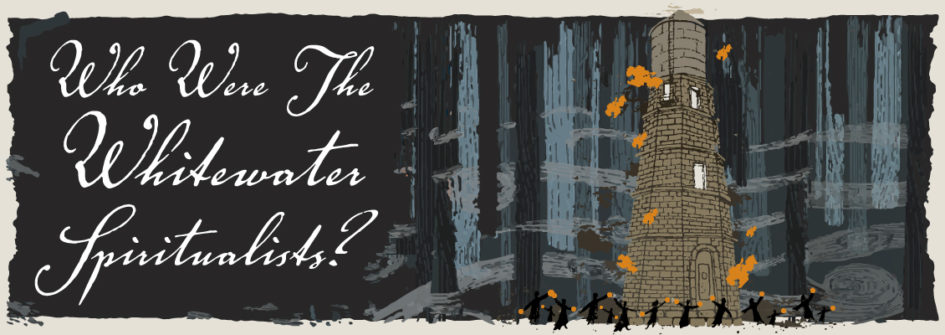Written by: Carol Cartwright of the Whitewater Historical Society
Edited by: Bailey Gaffney
Many of the “spooky” legends of Whitewater may be traced back to real history. For example, in 1889, Morris Pratt, a Spiritualist, built a “Temple of Psychic Science” on the corner of Fremont and Center Streets. It was one of the only buildings constructed for Spiritualists to follow their beliefs and practices in Wisconsin. After 1902, the temple was turned into a school for Spiritualists, an institution that lasted into the 1930s, and the only documented formal school for Spiritualist practice in the United States.
So, who were these Spiritualists? They were people who believed that they could communicate with spirits (dead people) via mediums to gain insight into their lives and the lives of the deceased. Many Spiritualists treated their beliefs as a religion. Some Spiritualists rejected mainstream religion and promoted Spiritualism as a “true faith.” Others merged Spiritualism and Christianity.
The main practice of Spiritualism was, of course, communicating with spirits and the main way this was done was through a séance led by a trained medium. Another popular practice was “spirit healing.” Spiritualists believed that there were forces that radiated from bodies and that these forces could be harnessed to heal diseases. Morris Pratt was a strong believer in spirit healing and welcomed many sick people to his temple for this practice.
Spiritualism became popular after 1848 when the Fox Sisters, of northwestern New York State, claimed to communicate with a spirit of a man who may have been murdered in their house. Spiritualism remained popular after the turn of the 20th century, but gradually faded away, although there are still practicing Spiritualists in the U.S. today.
How women Spiritualists may have led to the legend of the “Witches of Whitewater.”
In Whitewater, for over 40 years, there was a temple and school for Spiritualism, the belief and practice of communicating with the dead. Most serious Spiritualists treated their beliefs as a religion, but unlike mainstream religions, women filled important positions in Spiritualism. In fact, if there was a “clergy” in Spiritualism, it was the medium, a position dominated by women.
The séance was the most important practice in Spiritualism and if it was to be an authentic experience, it had to be led by a medium. And, the vast majority of mediums were women. Spiritualists felt that women had a unique ability to communicate with the dead and were encouraged if they showed an interest.
Spiritualism could also be called a “feminist” religion. While men held positions of power in the religion, women had equal status and also filled important positions. Many women were Spiritualist “speakers” who traveled the lecture circuit or were mediums that held seances in communities throughout the U.S.
In 1848, the year that Spiritualism became popular in the U.S., the first women’s rights convention was held in upstate New York. Spiritualists were prominent in the women’s rights movement, perhaps because they were treated so equally in their religion.
One of the most interesting Spiritualists who lived in Whitewater in the 1860s was Juliet Severance. At that time, women were generally locked out of becoming practicing physicians. At the same time, many doctors were inept at treating women and the most medical care women received was from midwives.
Until the 20th century, when “modern” medicine began to dominate the field, doctors practiced in many different fields, such as homeopathy. Severance trained in the field of hydropathy, a method that used water in different ways to help people heal from illnesses or injuries. Severance was also a feminist and Spiritualist, who advertised her services particularly to women. She was typical of many women who combined Spiritualism and feminism.
So, what does that have to do with witches? Well, a woman who held an untraditional role as a medium or leader in Spiritualism, who supported women’s rights, and even worked in a “male” occupation like a doctor, would have been criticized or worse in the 19th century. Many people who were against Spiritualism likened the belief to witchcraft and if a woman was a non-traditional Spiritualist it would have been very easy to liken her to a witch, even if the only occult thing she did was participate in a séance.
So, did the activities of women in the Spiritualist field in Whitewater cause people to liken them to witches? And did that translate into the legends that circulate around Whitewater today? You can decide, but I think it is very likely.

1 Pingback